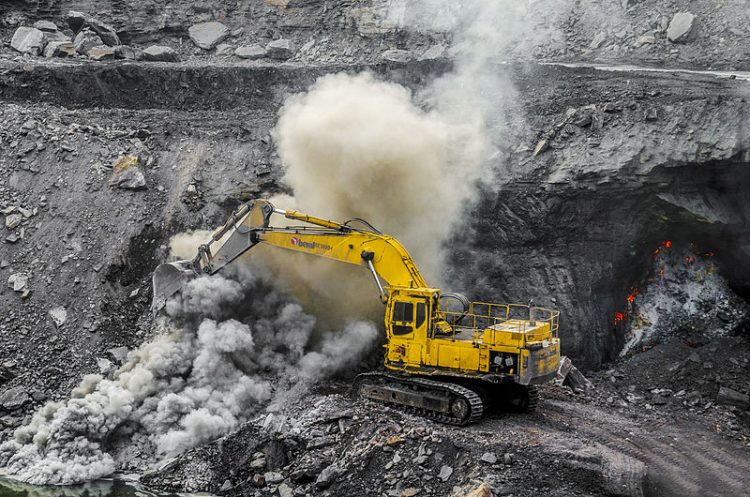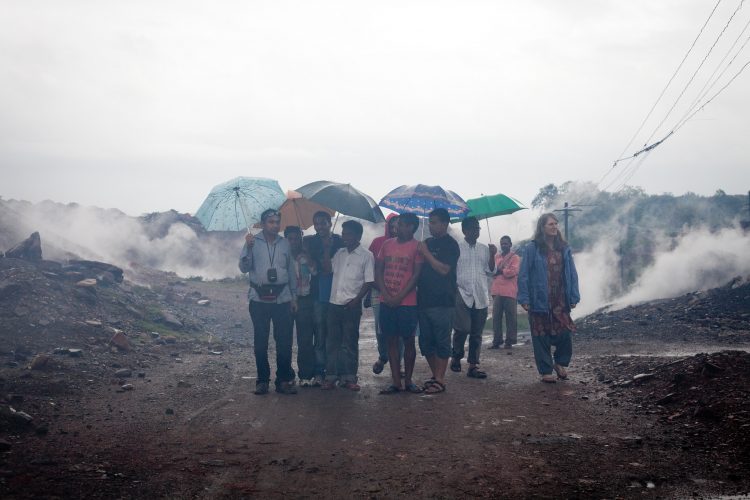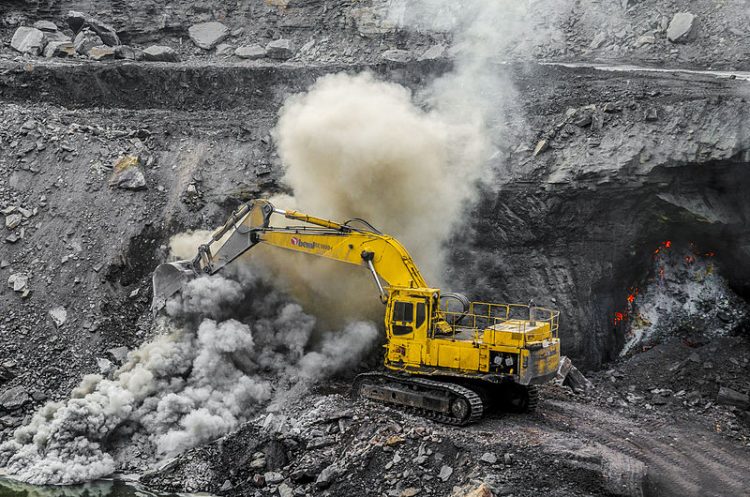One of India’s largest coal reserves, the Jharia coalfield, situated in the Dhanbad district of Jharkhand, is the site of one of the longest-burning fires in the world. The area has been burning continuously for over 100 years.
Mining in the Jharia coalfields, which cover over 100 square miles, began in the late 1800s, under British rule. The first detected fire broke out in 1916, but by the 1980s over 70 blazes had sprouted up, and none of them could be contained, let alone extinguished. As they were often deep underground, they were left to smolder in the hope that they would eventually burn out on their own. Unfortunately, a new mining operation in 1973 smothered that hope.

Photo: TripoStories-AB/Wikimedia Commons
That year, Bharat Coking Coal Ltd (BCCL), a subsidiary of state-owned Coal India, started a large-scale opencast mining operation as a rapid and more cost-effective method of extraction. Local activist Ashok Agarwal explained to Al Jazeera that this was when the fires took hold, with catastrophic consequences.
“The idea was they’ll get quick coal and they’ll get cheap coal … but there was underground mining already done over here. So there were a lot of galleries – galleries are tunnels which these people make and they extract coal. So the ground of the galleries is always full of small pieces of coal, and that catches fire. When you went in for open-cast mining where already underground mining has been done, you opened up the face of the galleries and then there was free flow of air inside and now you’ve got a massive fire.”
The flow of oxygen into the mining shafts fed the smoldering embers until they became massive flames, some recorded at 60 feet high. Many of the fire started as spontaneous combustion caused by the oxidization of minerals in the exposed coal, but they grew exponentially worse when surface mining operations exposed the embers to oxygen.

Photo: International Accountability Project/Flickr
Experts estimate that over 37 million tons of coal, worth billions of dollars, have been lost to the uncontrolled blazes, with a further 1.4 billion metric tons made inaccessible because of the fires. Despite this, and the woeful carbon emissions caused by the flames, India’s government reportedly intends to increase production in the area. Indian Prime Minister Narendra Modi has allegedly made moves toward putting out the fires, but only in the hope of expanding coal production.
Meanwhile, life for the residents of Bhulan Bararee, a nearby village, resembles that of a hellscape. “The ground is so hot at places, that walking even in shoes is near impossible. Almost everyone here is ill. Authorities ask the villagers to leave their homes and go. But most people fear loss of livelihood, and hence continue to stay,” Mohammad Nasim Ansari, a resident, told YourStory.
The burning coal releases toxic gasses and particles into the air, making it a hazard to breathe. The underground fires have also caused massive sinkholes that have claimed many lives over the years.
“Just imagine the emissions that are being produced by these fires,” Glenn Stracher, a professor emeritus of geology and physics at East Georgia State College, said to CNBC. “I have collected gas samples from different fires, and there are usually 40 to 50 hydrocarbon compounds, and many of them are toxic or carcinogenic. So this stuff is bad, really bad. There are for sure toxins or poisons in these fires, and they certainly exceed U.S. Environmental Protection Agency standards”
Unfortunately, the Jharia coal fire is only one of the thousands burning worldwide on every continent other than Antarctica. It is a costly and dangerous phenomenon affecting a fuel source that brought about the rapid economic development of the western world.
The emissions caused by these fires are almost impossible to calculate as the flames act erratically, sometimes calming down, sometimes suddenly intensifying. They can also be difficult to contain or extinguish, although some methods, such as pouring sand on the flames or injecting inert gas into the tunnels, can smother parts of the fires. These operations, however, are costly and have had little effect. Experts are skeptical that the fires can ever be fully extinguished as long as they have fuel to burn.













